 Ken Annakin Ken Annakin
By Thomas Hauerslev
For "Flying Machines" I leaned to the Todd-AO system because
the camera system was light, very easy to operate and fast
to load. Todd-AO really gave you results equal to 3-strip
printing. |
 Ken Annakin 90th Birthday Salute 2004 Ken Annakin 90th Birthday Salute 2004
One of the most esteemed and talented Directors in British Cinema history -
Mr. Ken Annakin! He’s going to do a short introduction to his personal
favourite: Those Magnificent Men in Their Flying Machines, in a beautifully
restored 70mm print. |

• Go to
Jean-Jacques Annaud's Introduction to "The Bear" |
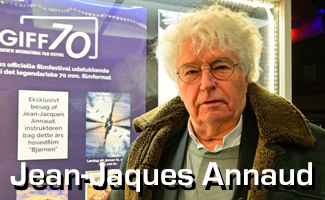
• Go to
A
Conversation with Jean-Jacques Annaud, Director of "The Bear" (1988) |
 Asger Bak Asger Bak
By Thomas Hauerslev
It is Asgers
firm belief that cinemas will still be around in 10 years.
"Celluloid may have been replaced with some form of digital
projection, but Joe Customer will still need a place to see
his films, bring his wife and have a few beers. |

• Go to
Herbert Born Interviewed |
 Herbert Born Herbert Born
I was born in the same year
as CinemaScope had it’s public birthday. Went to school and began during
school work as a part time projectionist in Aachen, Elysee cinema. |
|
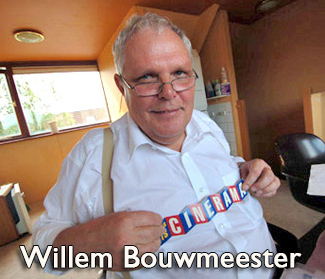
• Go to
Wide Visit With
Willem Bouwmeester |
|

• Go to
Ziryab Ben-Brahem In Conversation |
 Hans Braman Hans Braman
By Thomas
Hauerslev
The interview took
place in the
projection room of
the Royal cinema in
Malmö, Sweden Monday
3 June 1996 during
the 70mm performance
of "The Great Race". |
 Kevin Brownlow Kevin Brownlow
By Mark Lyndon
My mother said "Abel Gance is at the NFT", so I grabbed
the script, and the few stills I had
and rushed off and there I met the great man |
  Jurgen
Brückner Jurgen
Brückner
Von Manfred Romboy
Coburgs Filmchronist von Manfred Romboy, DGPh Lust am Film wurde dem
1941 geborenen Jürgen A. Brückner quasi in die Wiege gelegt. 1938 hatte
sich sein Vater Rudolf Brückner, ein Coburger Fabrikant, eine
Siemens-Filmkamera gekauft. Es versteht sich, dass als beliebte
Filmobjekte auch seine beiden Söhne herhalten mussten. Eventuell hat das
katzenartige Abschnurren der väterlichen Doppel 8-Kamera schon im
Unterbewusstsein des kleinen Jürgen die Grundlagen seiner später so
ausgeprägten Filmaffinität gelegt. |
 Olivier
Brunet Olivier
Brunet
By Ramon Lamarca
Choosing 70mm could have been a way to try to conceal my weaknesses... I
have no true answers to that. I still wonder. I think truth is now in the
eye of the audience. The film does not belong to me anymore. |
 Hans-Kristian Bukholm Hans-Kristian Bukholm
By Thomas Hauerslev
70mm really started with me when I was 14 years old and I saw David
Lean’s masterpiece “Lawrence of Arabia” at a small
cinema in Bergen on the west coast of Norway. Being able to count the grains of sand in the
desert, that was a major thing for me when I decided to become a
cinematographer. |
 Hans Kristian Bukholm Hans Kristian Bukholm
By Thomas Hauerslev
We chose 65mm because the film is going
to be shown on a big curved screen, covering more than 100'
angle from the audiences point of view. No smaller format
could give the same feeling of being present in an arctic
environment. |

• Go to
Production Designer Henry Bumstead Interview |
  Une
Visite Chez Monsieur Cinerama Une
Visite Chez Monsieur Cinerama
By
Martial DASSONVILLE
François CARRIN est plus connu à l’ALICC sous le pseudo de Mr. CINERAMA.
En effet, notre conseiller à la rédaction d’ Infos-Ciné est passionné
par les techniques d’écran large. Il a consacré toute sa vie
professionnelle aux activités de métreuréconomiste de la construction.
En marge de sa profession, il a été projectionniste dans un cinéma de la
banlieue de Valenciennes de 1963 à 1973, à Quiévrechain, petite ville de
7000 habitants à la frontière belge. |
  En
Conversation Avec François Carrin En
Conversation Avec François Carrin
By
Martial DASSONVILLE
François CARRIN. S’intéresser à l’écran large, au triple écran, avoir été projectionniste
et avoir fréquenté ces installations un peu hors normes, ce n’est pas
courant à l’ALICC. François nous explique donc son CINEMA PARADISIO personnel. |

 • Go to
2e classe CHAUVET ! Vous allez à l’Elysée! • Go to
2e classe CHAUVET ! Vous allez à l’Elysée!
• Go to
Soldier CHAUVET! You are going to Elysée
Palace! |
 T. C. Christensen T. C. Christensen
By Kurtis Burr
One of the
biggest challenges
in doing an IMAX
film about "Lewis and Clark"
is trying to capture
the incredible
scenery they would
have experienced
almost 200 years
ago. |
 David Coles? David Coles?
At the impressionable age of 12 my mother took me to the Sydney Plaza Theatre to see “Seven Wonders of the World” and I immediately became a Cinerama addict - determined to find out all about this wondrous process. |
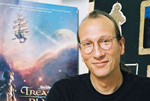 Roy Conli Roy Conli
By Bill Kallay
I came to Disney in
1993 and worked on
the development of "The
Hunchback of Notre Dame" and was co-producer on that film. I went
to France to run the French unit, and then ended up staying for three
years running the French studio, where I worked on the production of "Hercules"
(1997) and "Tarzan" (1999). And then I came back here
five years ago to produce this film. And previous to that, I was in the
theatre. |
 Carl
Davis Carl
Davis
By Mark Lyndon
I got a chance to talk to the last cinema organist of the Paramount
Theatre in New York, someone who was still practising. We are talking
now of the mid 1970s so you could still find a few 70 and 80 year-olds
around. I got first hand information on how you would assemble a score |
 Louis deRochemont Louis deRochemont
By Borden Mace
Riding back to Manhattan alone with a captive David Lean in a thirty minute taxi ride, I had questions of a lifetime to ask him. I never got to ask one. He was so excited and had so many questions he wanted answers to. |
 Ken
Draper interviewed Ken
Draper interviewed
By
Mikael Barnard
I started work at the Casino on 19 September 1954, eleven days before
opening night on 30 September. We had to pick it up quickly but we did many
rehearsals and were well prepared. I started with the début screening of
This is Cinerama, and then in 1956 we ran Cinerama Holiday. I left in 1957
for a job at MGM British Studios at Borehamwood where I worked in the
preview theatre |
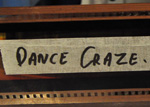 Joe
Dunton Joe
Dunton
Following the first 70mm screening af "Dance Craze" in 30 years the
audience asked Joe Dunton questions about the making of this ground
braking film |
 Orion Jardim de Faria Orion Jardim de Faria
By Paulo Roberto P. Elias
It took me less than five minutes to realize that I sat face to
face with a man totally involved with the film business, not by
profit but by passion. |
 A
Hunter of Light in 65mm A
Hunter of Light in 65mm
By Michael Fatali
I have been a hunter of light in the American landscape for nearly
thirty-years now. I have been very lucky to acquire several 65mm cameras. My
experiences of capturing images with 65mm has really just begun. Seven years
it took for me to build the cameras, cranes, dollies, MOCO systems and even
a Cinebulle to move the cameras into some amazing remote and rugged
wildernesses. |

• Go to
“Lay Me By The Shore”, Director David Findley
talks about filming in 65mm |
 Ron Fricke Ron Fricke
By The Big Frame
Working in the 35mm format, I was feeling that
there was something lacking. Once I saw the IMAX theater and saw the film, I realized
this is how it should be done. |
 Conversation
with Mark Magidson and Ron Fricke Conversation
with Mark Magidson and Ron Fricke
Transcribed by Peggy & Paul Rayton
This interview has been
transcribed from the original event recording. It has been slightly modified
to optimise clarity in reading. |
 Gerhard Fromm Gerhard Fromm
By Thomas Hauerslev
Gerhard Fromm (b. 1932) has spent a lifetime with movies. From small
beginnings with DEFA in Berlin, to big European 70mm productions in the 1960s. From
working with Heinz Hölscher, Jan Jacobsen and Leni Riefenstahl, to teaching
camera techniques to students in his later life. |
 Randy Gitsch Randy Gitsch
By Thomas hauerslev
Cinerama has not played here
in years. Many, many years, and you can now get a clue as to the excitement
of the live experience, seeing it in a real theatre on a big screen, and
enjoy that experience. It is very theatrical. There is a lot of Showmanship
in Cinerama and this is a chance to go back to a theatre and learn about
what that was like. |
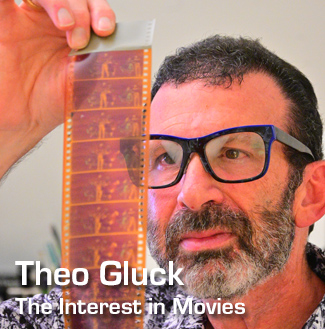
• Go to
Theo Gluck and the
Interest in Movies |
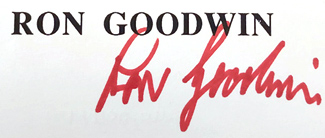
• Go to
Interview with
Composer Ron Goodwin |
 Dave
Strohmaier and Randy Gitsch Dave
Strohmaier and Randy Gitsch
By Mark Lyndon
Cinerama’s future might evolve into a name on more than just a couple of theaters;
Cinerama could come to mean a curved screen presentation; a noticeable
distinct curved screen, perhaps not 146 degrees, but certainly more than
a marginal curved screen. |
 Don Hahn Don Hahn
By Bill Kallay
My favorite
sequence in IMAX is when Mufasa's ghost shows up, Simba goes to the
reflecting pool, sees his reflection, and then all of the sudden, the
clouds form and Mufasa shows up. That's a stunning scene in IMAX. To see a six-story tall
apparition coming at you is very moving. |
 Jan Harlan Jan Harlan
By Thomas Hauerslev
While I was in New
York working for a data processing company I got to know Stanley very well –
he was already married to my sister since 1957. This was in 1963/64. After
that I continued with my work in Germany and Switzerland. Stanley worked
with Arthur C. Clarke in New York while I was there to prepare "2OO1" but
the family later moved to England to film “2OO1” at the MGM studios in
Borehamwood. I lived in Zurich then doing my job but visited Stanley and the
family from time to time in England. |
|
|
|

• Go to
7OMM with Per Hauberg. An evening with
"Dunkirk" in 70mm at the Malling Bio, Denmark |
 Thomas
Hauerslev Thomas
Hauerslev
The audience is the most
important factor, and it is paramount to take good care of them, and that is why a projectionist is
still needed. If he is removed "Cinema" will become a fake plastic
experience, and you might as well stay at home to see the film. |
 Jan
Jacobsen Jan
Jacobsen
By Gerhard Fromm
Jacobsen met with Mr. Travnicek and Mr. Pinelli
and they convinced him to develop a European version of the highly
successful Todd-AO process. So was "MCS 70" founded and in a short
time Jacobsen and his small team built six 65mm 5-perf field
cameras. |
 Jan Jacob Kotte Jan Jacob Kotte
By
Anton
Kotte
The
most remarkable moment came at the end of a working day in
1963. My father entered our living room, wearing a hat and
coat, which was very unusual for him, and told to us: “We
won an OSCAR"! |

• Go to
The Cinerama Archaeologists |
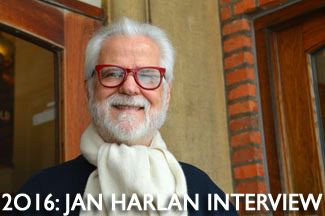
•
Go to
It's All in the Writing. Jan Harlan in
Denmark |
 Working for Mike Todd Working for Mike Todd
By Glenda Jensen
Midori Tsuji was a fascinating and beautiful woman. I was in awe of
her. She was a person very much in command of herself. She took care
of everything for Mike and, occasionally, for Elizabeth. I wanted to
be like her. |
 Greg Kimble Greg Kimble
Greg Kimble is a classically trained visual effects
supervisor with credits dating back to the Special Edition
of "Close Encounters". An avid "Trekie," his first screen
credit was on the original Star Trek film, where he shot all
the Klingon war birds and the V'ger craft. |
 Rolf
Konow Rolf
Konow
By Thomas Hauerslev
My job is to make people go and see the film: I shoot still photos that are
supposed to show the sense of a scene. In the old days there were photos
outside the cinema – around maybe 35 photos, that people looked at before
they went in to see a film. My role is to take those photos, and also photos
for publicity, for magazines; and later on, books that have to do with
certain directors. So that’s what it’s all about. A good still image is something that captures the scene, in a way that
will encourage people to see the film. |

• Go to
Bill Lawrence in Conversation |
|
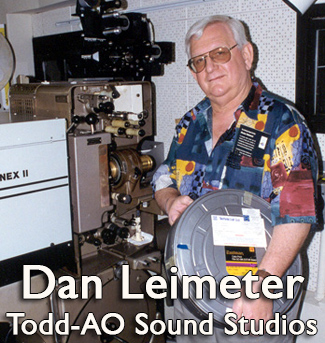
• Go to Working at
Todd-AO Studios UPDATED
• Go to Gallery:
Visit to
Todd-AO Studios |
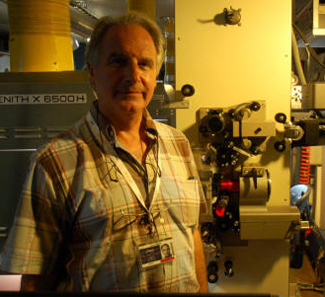
• Go to Loïc LEDEZ -
The French Master Projectionist
 • Go to Loïc LEDEZ - The French Master
Projectionist
• Go to Loïc LEDEZ - The French Master
Projectionist |
 Sven
Libaek Sven
Libaek
The world premiere was a typical Hollywood event, and there we were, three
young Norwegian boys, who a year earlier could only have dreamt about
attending such a spectacle. |
 Sam Lomberg Sam Lomberg
By Thomas Hauerslev
In 1959 he
accepted an offer to
join NTA as their
Director of Foreign
Sales. It was while
he was with NTA that
he became involved
with Cinemiracle and
the road showing of
“Windjammer”. |
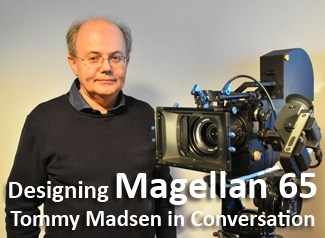
• Go to
Designing Logmar's
ultra-light Magellan 65 Camera
• Go to
Logmar Camera Solutions premieres a new
hand-held 65mm Camera |
 John Mitchell John Mitchell
By Cameron Glendinning
Let's go to Australia and meet a man who has a complete 3-strip Cinerama
cinema in his garden.
It all started when he heard on the grapevine that a certain storehouse
was to be emptied. |
 Rick Mitchell Rick Mitchell
By Ramon Lamarca
Whatever future
there is for 70mm it
will have to come
from outside the
mainstream
production industry,
possibly from
outside the United
States. |

•
Go to
Projectionist Jan Niebuhr, Denmark |

• Go to
France Nuyen's introduction to "South Pacific" |
 Orla
Nielsen Orla
Nielsen
By Thomas Hauerslev
I run 70mm at Biffen for the simple reason I think it is a fabulous format.
I like to look at it, it is easy to handle and we can run
it. It is a pleasure for me to see a large well-illuminated
70mm image on the screen. And with that large hole in the
projector aperture plate, it is easy to punch some light
onto the screen. Those are the primary reasons why I run
70mm here. |
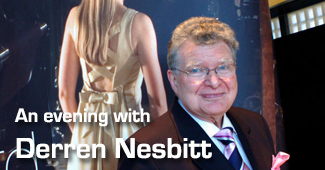
• Go to
An Evening with Derren Nesbitt |

• Go to
Bohemian Rhapsody |
 Brian O'Brien Biography Brian O'Brien Biography
By Walter P. Siegmund and Brian O'Brien, Jr.
Brian O'Brien was born in Denver, Colorado, in 1898 to Michael Phillip and
Lina Prime O'Brien. His education started in the Chicago Latin School from
1909–1915, and continued at the Yale Sheffield scientific school where he
earned a Ph.B. in 1918 and a Ph.D. in 1922. In 1922 he married Ethel
Cornelia Dickerman and they had one son, Brian, Jr.. |

• Go to
Jan Olsen Interviewed |
 Ole Olsen Ole Olsen
By Thomas Hauerslev
I was not destined for the cinema business at first, but circumstances directed me into it. My father ran the cinema at the Danish Film Museum in Frederiksberggade
in downtown Copenhagen. It was a childhood full of film. My
brothers and I saw films all the time. |
 John
O'Callaghan John
O'Callaghan
John O'Callaghan was born in 1965 in Chicago,
but has lived in Mission Viejo since 1972. He began making films at age 14
in 8mm and video. He has made two short films in 65mm. His
first was made in 1989 and the second was finished in
November 1992. |
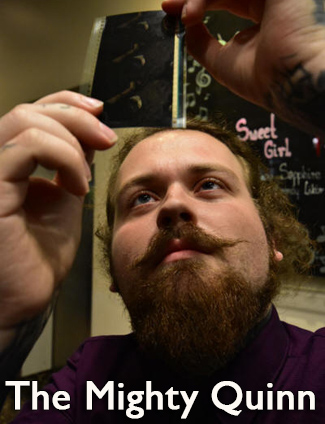
• Go to
The Mighty Quinn |

• Go to
65mm Film: The Fabric of Magic. Part 1 – The
Kodak View |

• Go to
Paul Rayton In
Conversation |
 Paul Rayton Paul Rayton
Paul Rayton was born in the far northeastern part
of the US. Initially brought up there, by the early 1960s he
felt enough interest in film to head west |
 Eric Rondum Eric Rondum
By Peter H Rondum
I always knew dad had worked for Cinerama. But being that it simply
did not exist for most of my lifetime, I never really grasped impact of
Cinerama until stumbling upon the "Cinerama Adventure" |
 Sebastian
Rosacker Sebastian
Rosacker
By Thomas
Hauerslev
I usually say about 200 times, but I have no idea. Many times at home, in my
home theatre as well. It has everything. Best photo, best picture, best
actors and actresses, best music, you name it. It has it. It is the Zhivago
character I like the most. He is a man not seeking revenge. How bad the
situation, no revenge. That is big. That is what appeals to me because that
is the future actually. I don’t think we will have wars in the far future.
Zhivago is a man of the future. I have read the book, and this the theme in
the book. |
 Miklós Rózsa Miklós Rózsa
By Jeffrey Dane
It seemed almost every square foot of wall space was lined with
autograph letters (and some manuscript pages) of the composers, mounted
in special frames so that when turned around the overside of each letter
could also be read. |
|
|
|
|
|
|
 David Samuelson David Samuelson
By Lyndon and Hauerslev
I was a cinema newsreel cameraman, with
Fox Movietone. We covered the Ascot horse racing and I was
assigned to film when the Queen went down and talked to all the
jockeys. We had to film that from quite a long way away, because CinemaScope was about wide screen, it didn’t cross their minds to equip
me with a long lens. The only CinemaScope lens I had was a wide one, and
the Queen was tiny, a long way away. I took the decision, to go down from my
assigned location to the ground level and film the Queen. |
 Sir Sydney Samuelson Sir Sydney Samuelson
By Thomas Hauerslev
Sydney Samuelson gives a fascinating insight about his work with the
international and British film industry in the 1960s and 70s. Sir Sydney and his three
brothers managed Samuelson Film Service in London, a company which
supplied all the technical equipment for film productions all over the
world. Their
costumers included David Lean, Stanley Kubrick, and Ken Annakin. In this conversation Sydney
reveals a little bit about what went on in the
movie business, during the time of "2001: A Space Odyssey", "Ryan's Daughter"
and may others. |

• Go to
Ronald Rosbeek in
Conversation |
 Walter Siegmund Walter Siegmund
By Thomas Hauerslev
We didn’t try to reproduce Cinerama - we made our own
process. It seems to me that there were certain parameters,
which more or less were expected. Something like a 2:1 ratio
between width to height. |
 John Sittig John Sittig
By Mark Lyndon
When I was seven years old living in Columbus Ohio, Cinerama had opened in
Cincinnati which was about 100 miles away and, this is before freeways,
and my parents took me to see Cinerama at the RKO Capitol Theatre in
Cincinnati; even though I was seven years old I can still remember where I
was sitting in the balcony and the thrill that I felt when Lowell Thomas
said – “Ladies and Gentlemen, This is Cinerama” |

• Go to
Morten Skallerud in
Conversation |

• Go to
Stephen Slater in Conversation |
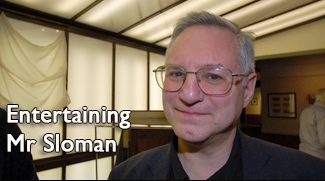
•
Go to "Reel Life" engages from the start
• Go to
'REEL LIFE', a memoir by Tony Sloman |
 Dave Strohmaier Dave Strohmaier
By Thomas Hauerslev
We went to see "Seven
Wonders of the World" in 1957, It was an interesting and very unique
movie experience,
because because seeing that in the widescreen format was kind of mind
boggling. That is probably why Cinerama lasted so long, because it was so
different. Not only did it create a wide screen in the cinema, but it was
different on its own right, and people felt they were moving with the
theatre. |
 "Windjammer"
Cast & Crew "Windjammer"
Cast & Crew
By Thomas Hauerslev
A small team, two Norwegians and a Dane, met with some of the
cast and crew from the Cinemiracle adventure "Windjammer" to talk
about the history |

• Go to
Sune L. Thomsen and
the Challenges of
70mm |

• Go to
Sune L Thomsen about
GIFF 7O @ the Gentofte Kino, Denmark
• Go to Gallery:
Gentofte Kino, Greater Copenhagen, Denmark |
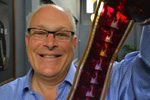 My
father never really talked about the motion picture business My
father never really talked about the motion picture business
Cyrus Todd in
Conversation
I worked in the motion picture business for about four years in New York,
and then I moved back to Ireland became a chef. I did that for about twenty years. My legs have gotten old and I decided to find
something else. And a friend of a friend said I should get into the
appliance business – there was somebody looking for help, and instead of
standing behind a stove and cooking, now I stand in front of them and sell
them! |
 Oliver
Michael Todd Oliver
Michael Todd
My name is Oliver Michael Todd. I was born in New York where I lived the
first six years of my life. I went to University in the US and actually took
a little detour from University and went to Los Angeles before I became a
school teacher and over a series of years and different locations found
myself lucky enough to find a job in Copenhagen. |
 Mike
Todd, Jr. Mike
Todd, Jr.
By Roy Frumkes
“This Is Cinerama” opened to rave reviews.
All of Dad's ideas had worked - the name of the film was his, the roadshow concept was his. No one had believed his predictions about Cinerama; now everyone was listening. |
 Letters
and Dust Devils Letters
and Dust Devils
Susan Jane Todd in Conversation with Thomas Hauerslev
My father had the difficult job of following in his father’s footsteps. I
think my father always wanted to be a philosopher: that was his Major in
college. He loved fine art – painting and sculpture. And good literature.
But he got stuck with "Scent of Mystery" this because his father died. They
were just about to work on a Todd-AO movie – "Don Quixote". He couldn’t do
it because he was in so much grief – so he made this project. |
 Douglas Trumbull Douglas Trumbull
By Tony Earnshaw
I have discovered that if you embrace digital technology from a new
perspective and you say, ‘Let’s just get rid of all the historical artefacts
and beliefs of what an image is or what it should look like and start over
and do it all digitally and take advantage of high resolution cameras that
are available and that very people use, the high resolutions projectors that
are available that very people use and take advantage of the fact that the
digital projectors that are in tens of thousands of movie theatres can run
at 144fps and no one’s using it. |
 Douglas
Trumbull Douglas
Trumbull
By Wolfram Hannemann
I’m absolutely confident that the digital image has caught up with film in
terms of frame rate, resolution, steadiness, brightness and colour
saturation. I’ve gone totally digital; I’m not interested in film at all. |
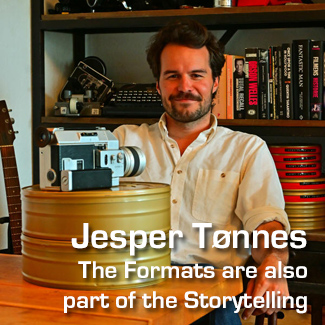
• Go to
Jesper Tønnes: The Formats are also part of
the Storytelling |

• Go to Interview with Jean-Pierre Verscheure about
Cinevolution
• Go to Gallery
The Sound Restoration Centre of
Excellence |

• Go to
A Conversation with
Dr. Richard Vetter |
 Jim
Ward Jim
Ward
By Bill Kallay
Jedi Knights, Imperial Storm troopers and Tusken Raiders rejoiced this
past summer of 2002, when it was announced that "Star Wars:
Episode II-Attack of the Clones", would be released in the IMAX
format. For how many
years have fans of
the original
trilogy, and now
prequels, wished
upon the stars above
Skywalker Ranch for
the films to be
shown on the giant
IMAX screen? |

• Go to
From YouTube To 65mm Film |
 What
7OMM is to Johan Wolthuis What
7OMM is to Johan Wolthuis
By Thomas Hauerslev
Johann Wolthuis has been crucially instrumental in reviving world wide
interest in 70mm. Indeed, it is no exaggeration to say that there might not
have been the same level of awareness and appreciation of the 70mm format
without his tireless dedication, advocacy and enthusiasm, which goes back
for over three decades. We who love 70mm and see it as the greatest and
grandest medium for the moving image of them all, owe him a great deal. He
speaks most eloquently for us all. |
 Johan Wolthuis Johan Wolthuis
By Thomas
Hauerslev
In Amsterdam I saw
Michael Todd's show
"Around the World in
80 Days". From that
time on I was
convinced that 70mm
Todd-AO with 6
channel sound is the
ultimate film
presentation format
for the cinema. |
 Betty
York Betty
York
By Betty York
When we [Johnny and I] separated I went to NY and successfully broke
into photographic modelling and TV commercials, making good use of my
SAG (film) membership which unions required. I also did freelance
greeting card designs, building on the years I spent as a designer with
the Hallmark Card Company in Kansas City. |

• Go to
Interview & People |
|
|
